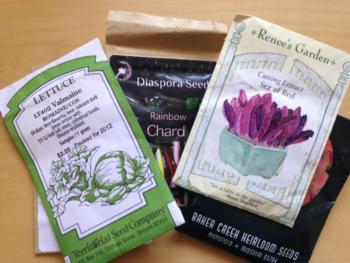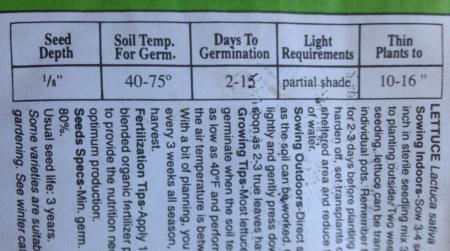Unused stories
Gardening Tips - A Beginner's Guide to Starting Seeds Indoors

Read the recipe, or seed packet gather your ingredients and equipment, prepare them and then wait for it to be ready. If you have never had a go - try and rather like getting that cake out of the oven the results can be very rewarding as the seedlings begin to germinate and those first seed leaves appear.
Read the seed packet
Study your seed packet as it can hold valuable information on its 3 by 5 inch surface. It can tell you seed depth, soil temperature for germination, days to germination and growing tips to name a few items. Some seeds can only be started directly outdoors so don’t pick those if you are planning on sowing indoors.

What are the ingredients?
- Seeds - Pick some seeds of flowers or vegetables you want to grow. Fresh seed stored in dark dry and cool conditions is best. Hybrid seeds cost more but have more vigor and uniformity.
- Soil - This needs to be loose, fine textured and drains well. For beginners a commercial planting mix works well as it has some fertilizer in it. As your experience grows you might want to experiment with other materials including vermiculite, sand, peat and garden soil. Garden soil will need to be sterilized before use. Some of these materials will also require you to fertilize them as they have little fertility.
- Containers - Almost anything can be a home for your seeds but generally select a shallow container. Plastic flats, clay pots, wooden trays and empty yoghurt pots are a few. It is important to wash them in soapy water and sterilize them in a solution of one part chlorine bleach to ten parts water. Dry them before use and make sure they have drainage holes at the bottom.
- Preparation – Look at the seed packet to find out when plants can go outdoors and also how long it takes from sowing. Fill your container to within ¾ inch from the top with the moistened mixture and gently level the planting surface. Sow in rows or by scattering on the surface and cover the seeds. Depth will vary but generally, other than very fine surface sown seeds like petunias, cover with soil to a depth of about 2 times their diameter. Cover the tray with a clear plastic lid, or plastic film or glass and place in the required germination temperature. 65-75 degrees F is usual though some seeds like sweet pea and broccoli only need 55degrees F. Do not place in direct sunlight.
Once the seeds have germinated move the container to a bright place such as a south facing window and remove the plastic or glass cover. Try to keep the temperature constant for best results and water before wilting occurs. To water place the container in a shallow bowl and allow the water to filter upward until the soil is damp again.
When you have at least one set of true leaves you can transplant the seedlings. If you are transplanting them outside you will need to harden them off to the outdoor temperatures by gradually introducing them to life outside. Start the process in a shady location when it is not windy or below 45 degrees F. Increase the time outdoors over a 2 week period and then carefully remove from their container handling gently by the leaves. Lettuce and tomatoes are easily transplanted.
And a bit like making a cake - the results can vary but its always fun to have a go.
For more detailed information, check out Purdue's tips on starting seeds indoors. Not sure what edibles to grow? Check here for a year-round planting guide.
By Lynne Jennings
